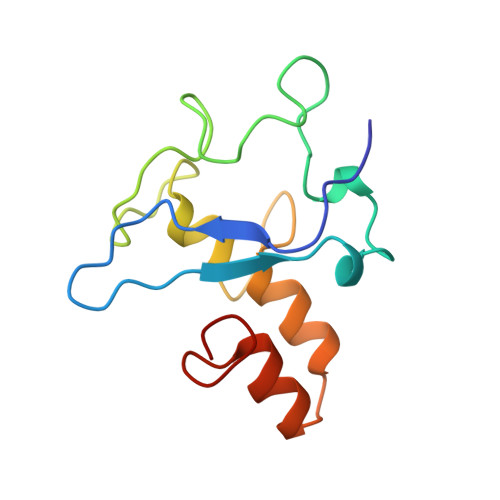Cytochrome c3 from Desulfovibrio gigas: crystal structure at 1.8 A resolution and evidence for a specific calcium-binding site.
Matias, P.M., Morais, J., Coelho, R., Carrondo, M.A., Wilson, K., Dauter, Z., Sieker, L.(1996) Protein Sci 5: 1342-1354
- PubMed: 8819167
- DOI: https://doi.org/10.1002/pro.5560050713
- Primary Citation of Related Structures:
1WAD - PubMed Abstract:
Crystals of the tetraheme cytochrome c3 from sulfate-reducing bacteria Desulfovibrio gigas (Dg) (MW 13 kDa, 111 residues, four heme groups) were obtained and X-ray diffraction data collected to 1.8 A resolution. The structure was solved by the method of molecular replacement and the resulting model refined to a conventional R-factor of 14.9%. The three-dimensional structure shows many similarities to other known crystal structures of tetraheme c3 cytochromes, but it also shows some remarkable differences. In particular, the location of the aromatic residues around the heme groups, which may play a fundamental role in the electron transfer processes of the molecule, are well conserved in the cases of hemes I, III, and IV. However, heme II has an aromatic environment that is completely different to that found in other related cytochromes c3. Another unusual feature is the presence of a Ca2+ ion coordinated by oxygen atoms supplied by the protein within a loop near the N-terminus. It is speculated that this loop may be stabilized by the presence of this Ca2+ ion, may contribute to heme-redox perturbation, and might even be involved in the specificity of recognition with its redox partner.
Organizational Affiliation:
Instituto de Tecnologia Química e Biológica, Universidade Nova de Lisboa, Oeiras, Portugal.
















